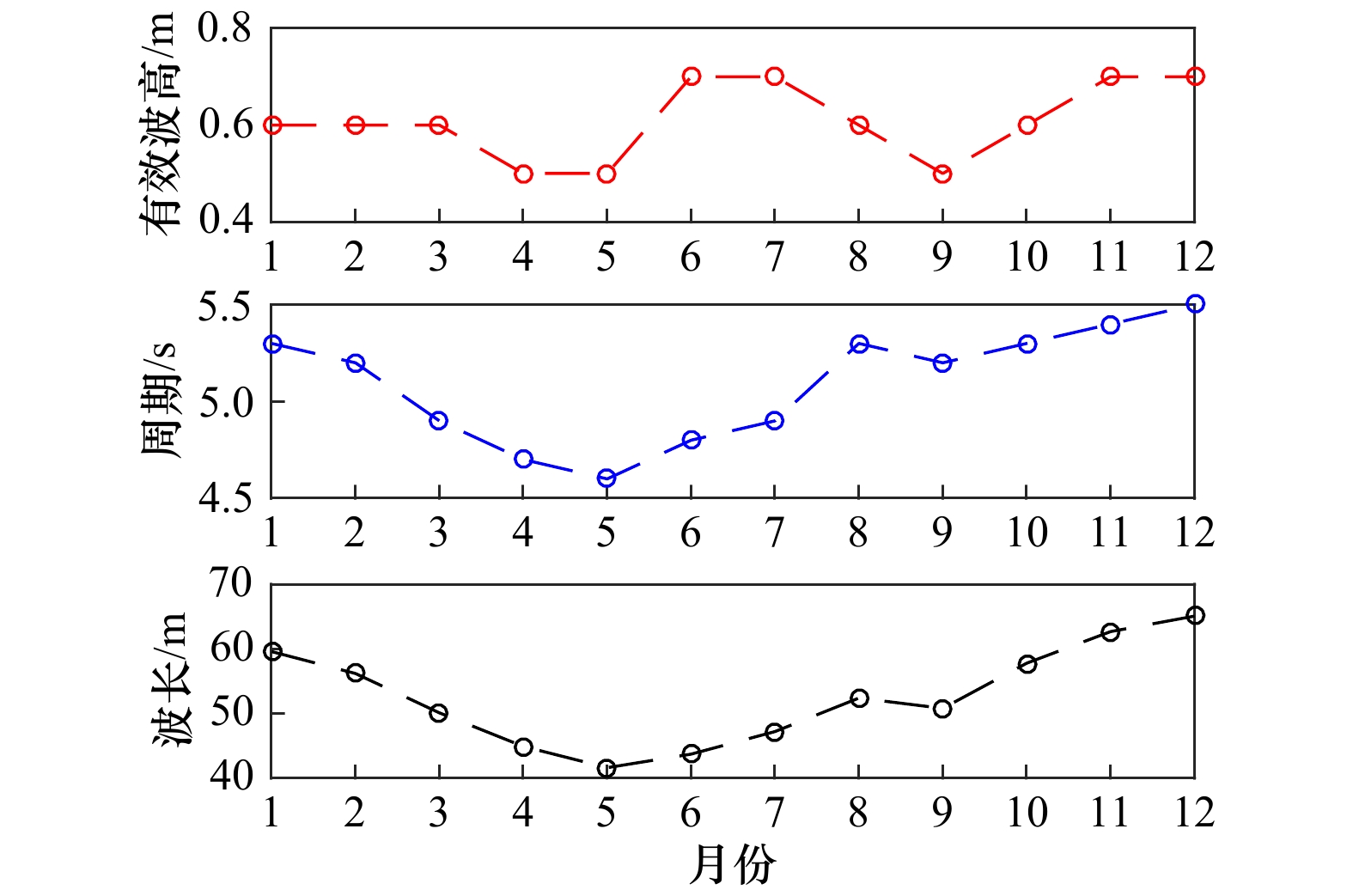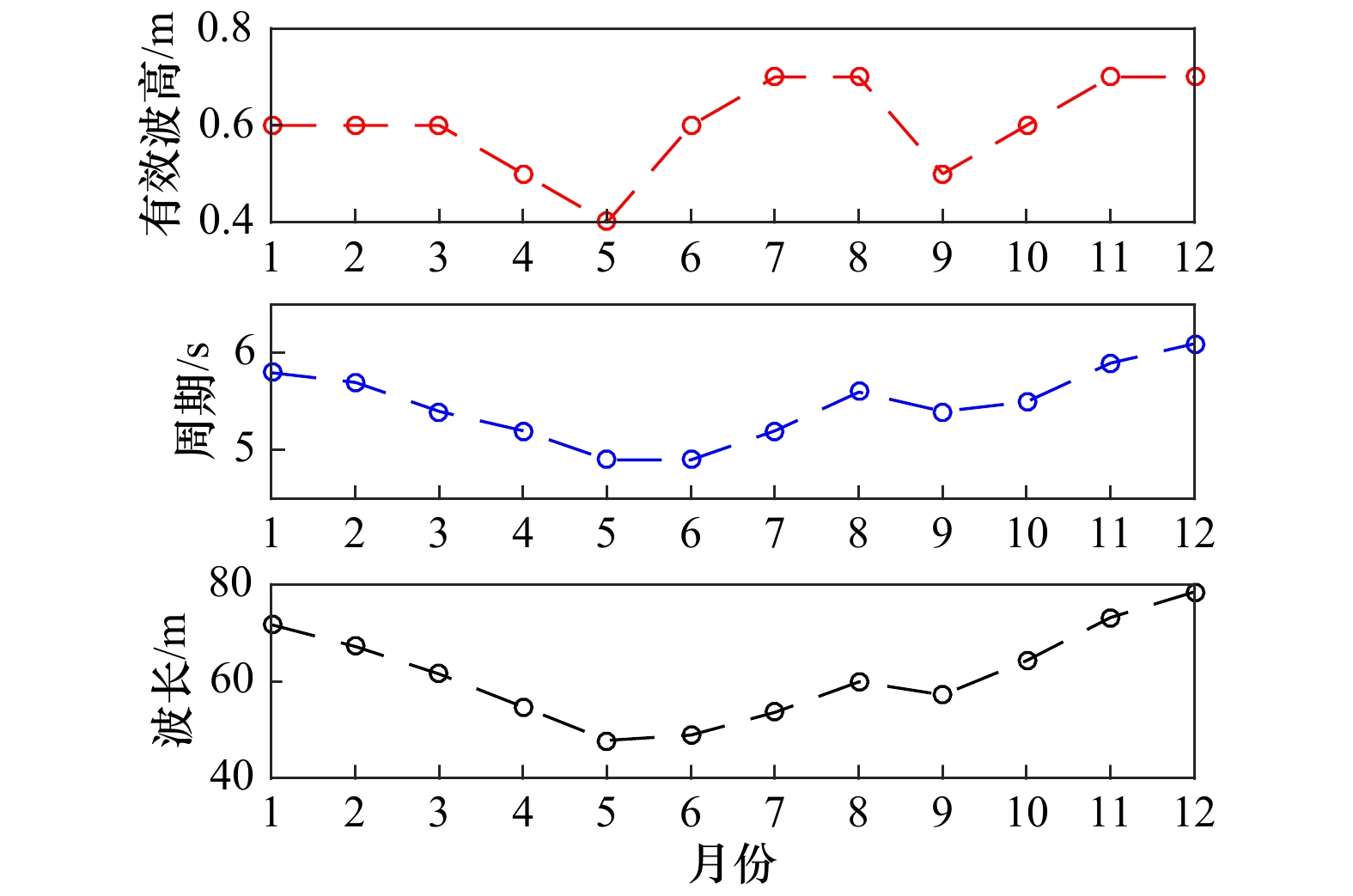Study on the risk and characteristics of rip currents over sandbars at South China’s recreational beaches
-
摘要: 为应对频发的致命性海滩溺水事故,自然资源部开展了我国首次滨海旅游区裂流灾害技术调查,在华南地区发现大量滨海休闲海滩存在浅滩沙坝和裂流现象。作为全国调查的部分成果,本文应用多种方法研究了广东省3个热门海滩沙坝触发的裂流机理、特征和演变规律。地形动力计算和卫星影像显示了沙坝形态、岸线形状以及裂流的高度动态性,尤其在青澳湾裂流呈现非常规的反季节变化,冬季风险较高而夏季风险较低。在相位解析水动力数值模拟中,裂流表现出对沙坝形态、浪高、浪向的高度敏感性。沙坝间较宽间隙会产生尺寸较大的裂流区,但比起窄沟槽不一定伴随更强的流速。当大部分水流集中从邻近的较宽通道回流入海时,部分窄沟槽几乎没有裂流产生。裂流流速与浪高成正比与入射角成反比。数值模拟结果表明,当入射角达到10°~30°时,沿岸流会取代离岸流占主导地位。现场调查也验证了在低潮时,较浅的水深会放大水流和波浪的地形效应,导致裂流风险加剧。本文研究结果可为滨海旅游区裂流灾害的工程减缓措施和公共警示提供有益参考。未来将会持续开展针对特定岸线的长期观测,以为裂流预警报和风险管控积累足够的统计数据。Abstract: In responding to deadly drowning accidents, China's first operational attempt on the rip current hazard prevention for coastal tourism was carried out by the National Marine Hazard Mitigation Service (NMHMS). A great number of recreational beaches in South China are found developing littoral sand bars and rip currents. Present paper, which is part of the nation-wide work, investigate the mechanism, characteristics, and evolution sandbar-induced rip current at three most visited beaches employing multi-techniques as complementary tools. The alongshore sandbar morphology, shorelines, and rip currents are highly dynamic with seasonal variations evidenced by the morphodynamic calculation and the satellite image interpretation. Unconventional contrary seasonal evolution of the rip current is identified at Qing’ao Bay with higher risk in cooler seasons. The rip current shows high sensitivity to the sandbar group pattern, the wave height, and the incident direction according to the phase-resolving hydrodynamic modelling. The wider rip channel between sandbars generated larger rip size compared to narrower gaps, but is not necessarily accompanied by stronger flow velocity. The rip current might be totally absent in small channels when majority of water flows out through neighboring broader pathways. The flow velocity is demonstrated proportional to the wave height and inversely proportional to the incident angle. Alongshore currents dominated over rip currents as the wave incident angle reached 10°−30° in the numerical simulation. It is verified in the field observation that the rip current is most hazardous at low tide when shallower water depth intensifies the topographic effect on waves and currents. The study result provides useful reference for the engineering mitigation and public warning of beach rip hazard. In near future, long time observation for specific sections of shoreline would be conducted to accumulate enough statistics for the rip current prediction and risk governance.
-
Key words:
- rip current /
- sandbar /
- wave /
- morphodynamics /
- numerical modelling /
- marine hazard
-
图 10 数值模拟的十里银滩水深地形及沙坝裂流通道分布(a)和5组有效波高和平均流速的计算结果(b−f)
b. 入射波高1.4 m,入射角0°;c. 入射波高1.2 m,入射角0°;d. 入射波高0.7 m,入射角0°;e. 入射波高0.7 m,入射角11.25°;f. 入射波高0.7 m,入射角33.75°
Fig. 10 Bathymetry with sand bars and 4 rip channels in the simulated area at 10-mile Beach (a), and computed results of significant wave heights and averaged velocities for 5 cases (b−f)
b. Hincident=1.4 m, θ = 0°; c. Hincident=1.2 m, θ = 0°; d.Hincident=0.7 m, θ = 0°; e. Hincident=0.7 m, θ = 11.25°; f. Hincident=0.7 m, θ = 33.75°
表 1 基于地形动力学指标分析的滨海旅游海滩裂流风险等级表
Tab. 1 Beach characteristics and rip risk level based on morphodynamic values
海滩组别 沙粒沉降参数 潮浪参数 海滩类型 裂流风险 反射型 $ {{\varOmega }} $<2 RTR<3 完全反射型(R) 低 $ {{\varOmega }} $<2 RTR>7 低潮台地型(LTT) 低 $ {{\varOmega }} $<2 3≤RTR≤7 低潮台地裂流型(LTTR) 中 中间状态型 2≤$ {\varOmega} $≤5 RTR<3 沿岸沙坝型(B) 高 2≤$ {\varOmega} $≤5 3≤RTR≤7 低潮冲流沙坝裂流型(LTBR) 高 消散型 $ {\varOmega} $>5 RTR<3 沙坝消散型(BD) 中 $ {\varOmega} $>5 3≤RTR≤7 无沙坝消散型(NBD) 低 超消散型 $ {\varOmega} $>2 RTR>7 平缓超消散型(UD) 低 表 2 十里银滩月平均裂流风险等级的地形动力模型计算结果
Tab. 2 Monthly rip current risk at the 10-mile Beach calculated by the morphodynamic model
月份 RTR $ {{\varOmega }} $ 海滩类型 风险等级 1 1.9 10.9 BD 中 2 1.8 11.0 BD 中 3 2.1 11.4 BD 中 4 2.4 10.1 BD 中 5 2.3 10.3 BD 中 6 1.4 13.2 BD 中 7 1.7 13.0 BD 中 8 1.6 10.9 BD 中 9 2.4 9.5 BD 中 10 1.9 10.9 BD 中 11 1.6 12.2 BD 中 12 1.5 12.1 BD 中 表 3 西涌海滩月平均裂流风险等级的地形动力模型计算结果
Tab. 3 Monthly rip current risk at the Xichong Beach calculated by the morphodynamic model
月份 RTR $ {{\varOmega }} $ 海滩类型 风险等级 1 1.1 3.0 B 高 2 1.1 3.1 B 高 3 1.1 3.2 B 高 4 1.3 2.8 B 高 5 1.6 2.4 B 高 6 1.1 3.4 B 高 7 1.0 3.7 B 高 8 1.0 3.5 B 高 9 1.3 2.7 B 高 10 1.1 3.1 B 高 11 0.9 3.4 B 高 12 0.9 3.3 B 高 表 4 青澳湾月平均裂流风险等级的地形动力模型计算结果
Tab. 4 Monthly rip current risk at the Qing’ao Bay calculated by the morphodynamic model
月份 RTR $ {{\varOmega }} $ 海滩类型 风险等级 1 1.8 21.1 BD 中 2 2.1 19.0 BD 中 3 2.3 16.5 BD 中 4 2.7 14.3 BD 中 5 3.2 11.9 NBD 低 6 3.2 11.8 NBD 低 7 3.1 11.3 NBD 低 8 3.0 10.9 NBD 低 9 2.6 13.9 BD 中 10 1.9 21.4 BD 中 11 1.9 21.4 BD 中 12 1.9 21.4 BD 中 表 5 不同模拟工况下的入射波浪条件
Tab. 5 Incident wave conditions for the numerical simulation
模拟工况 入射波高/m 波向 周期/s 相对岸线的入射角度/(°) 1 1.4 SE−SSE 4.9 0 2 1.2 SE−SSE 4.9 0 3 0.7 SE−SSE 4.9 0 4 0.7 SSE 4.9 11.25 5 0.7 S 4.9 33.75 -
[1] Dalrymple R A, MaCmahan J H, Reniers A J H M, et al. Rip currents[J]. Annual Review of Fluid Mechanics, 2011, 43(43): 551−581. [2] 王彦, 邹志利. 海岸裂流的研究进展及其展望[J]. 海洋学报, 2014, 36(5): 170−176.Wang Yan, Zou Zhili. Progress and prospect of rip currents[J]. Haiyang Xuebao, 2014, 36(5): 170−176. [3] Drozdzewski D, Shaw W, Dominey-Howes D, et al. Surveying rip current survivors: Preliminary insights into the experiences of being caught in rip currents[J]. Natural Hazards and Earth System Sciences, 2012, 12(4): 1201−1211. doi: 10.5194/nhess-12-1201-2012 [4] Alvarez-Euacuria A, Orfila A, Olabarrieta M, et al. A nearshore wave and current operational forecasting system[J]. Journal of Coastal Research, 2010, 26(3): 503−509. [5] Austin M, Scott T, Brown J, et al. Temporal observations of rip current circulation on a macro-tidal beach[J]. Continental Shelf Research, 2010, 30(9): 1149−1165. doi: 10.1016/j.csr.2010.03.005 [6] Benassai G, Aucelli P, Budillon G, et al. Rip current evidence by hydrodynamic simulations, bathymetric surveys and UAV observation[J]. Natural Hazards and Earth System Sciences, 2017, 17(9): 1493−1503. doi: 10.5194/nhess-17-1493-2017 [7] Macmahan J H, Thornton E B, Reniers A J H M. Rip current review[J]. Coastal Engineering, 2006, 53(2/3): 191−208. [8] Castelle B, Scott T, Brander R W, et al. Rip current types, circulation and hazard[J]. Earth-Science Reviews, 2016, 163: 1−21. doi: 10.1016/j.earscirev.2016.09.008 [9] Wright L D, Short A D, Green M O. Short-term changes in the morphodynamic states of beaches and surf zones: An empirical predictive model[J]. Marine Geology, 1985, 62(3/4): 339−364. [10] Masselink G, Short A D. The effect of tide range on beach morphodynamics and morphology: A conceptual beach model[J]. Journal of Coastal Research, 1993, 9(3): 785−800. [11] Scott T, Masselink G, Russell P. Morphodynamic characteristics and classification of beaches in England and wales[J]. Marine Geology, 2011, 286(1/4): 1−20. [12] Li Zhiqiang. Rip current hazards in South China headland beaches[J]. Ocean & Coastal Management, 2016, 121: 23−32. [13] Dusek G, Seim H. A probabilistic rip current forecast model[J]. Journal of Coastal Research, 2013, 289(4): 909−925. [14] 王彦, 邹志利. 平直沙坝海岸叠加波浪的裂流试验[J]. 水科学进展, 2015, 26(1): 123−129.Wang Yan, Zou Zhili. Experimental study of rip currents by intersecting wave on barred beach[J]. Advances in Water Science, 2015, 26(1): 123−129. [15] 彭石, 邹志利. 海岸裂流的浮子示踪法实验测量[J]. 水动力学研究与进展, 2012, 26(6): 645−651.Peng Shi, Zou Zhili. Experimental measurement of rip currents with video-tracked drifters[J]. Chinese Journal of Hydrodynamics, 2012, 26(6): 645−651. [16] Haller M C, Dalrymple R A, Svendsen I A. Experimental study of nearshore dynamics on a barred beach with rip channels[J]. Journal of Geophysical Research: Oceans, 2002, 107(C6): 3061. doi: 10.1029/2001JC000955 [17] Kennedy A B, Thomas D. Drifter measurements in a laboratory rip current[J]. Journal of Geophysical Research: Oceans, 2004, 109(C8): C08005. [18] Kennedy A B, Zhang Y. The stability of wave-driven rip current circulation[J]. Journal of Geophysical Research: Oceans, 2008, 113(C3): C03031. [19] Castelle B, Michallet H, Marieu V, et al. Laboratory experiment on rip current circulations over a moveable bed: Drifter measurements[J]. Journal of Geophysical Research: Oceans, 2010, 115(C12): C12008. doi: 10.1029/2010JC006343 [20] Suanda S H, Feddersen F. A self-similar scaling for cross-shelf exchange driven by transient rip currents[J]. Geophysical Research Letters, 2015, 42(13): 5427−5434. doi: 10.1002/2015GL063944 [21] Weir B, Uchiyama Y, Lane E M, et al. A vortex force analysis of the interaction of rip currents and surface gravity waves[J]. Journal of Geophysical Research: Oceans, 2011, 116(C5): C05001. [22] Marchesiello P, Benshila R, Almar R, et al. On tridimensional rip current modeling[J]. Ocean Modelling, 2015, 96: 36−48. doi: 10.1016/j.ocemod.2015.07.003 [23] Yu J, Chen S Y. Hydrodynamic instability mechanism for rip currents[J]. Studies in Applied Mathematics, 2015, 135(2): 196−223. doi: 10.1111/sapm.12074 [24] Zhang Chi, Zhang Qingyang, Zheng Jinhai, et al. Parameterization of nearshore wave front slope[J]. Coastal Engineering, 2017, 127: 80−87. doi: 10.1016/j.coastaleng.2017.06.008 [25] Schmidt W E, Woodward B T, Millikan K S, et al. A GPS-tracked surf zone drifter[J]. Journal of Atmospheric and Oceanic Technology, 2003, 20(7): 1069−1075. doi: 10.1175/1460.1 [26] McCarroll R J, Brander R W, Turner I L, et al. Lagrangian observations of circulation on an embayed beach with headland rip currents[J]. Marine Geology, 2014, 355: 173−188. doi: 10.1016/j.margeo.2014.05.020 [27] Scott T, Austin M, Masselink G, et al. Dynamics of rip currents associated with groynes—field measurements, modelling and implications for beach safety[J]. Coastal Engineering, 2016, 107: 53−69. doi: 10.1016/j.coastaleng.2015.09.013 [28] MacMahan J, Thornton B E. Low-cost handheld global positioning system for measuring surf-zone currents[J]. Journal of Coastal Research, 2009, 25(3): 744−754. [29] MacMahan J H, Thornton E B, Stanton T P, et al. RIPEX: observations of a rip current system[J]. Marine Geology, 2005, 218(1/4): 113−134. [30] Radermacher M, De Schipper M A, Reniers A J H M. Sensitivity of rip current forecasts to errors in remotely-sensed bathymetry[J]. Coastal Engineering, 2018, 135: 66−76. doi: 10.1016/j.coastaleng.2018.01.007 [31] Holman R, Haller M C. Remote sensing of the nearshore[J]. Annual Review of Marine Science, 2013, 5(1): 95−113. doi: 10.1146/annurev-marine-121211-172408 [32] Yoon S B, Park W K, Choi J. Observation of rip current velocity at an accidental event by using video image analysis[J]. Journal of Coastal Research, 2014, 72(S): 16−21. [33] Haller M C, Honegger D, Catalán P A. Rip current observations via marine radar[J]. Journal of Waterway, Port, Coastal, and Ocean Engineering, 2014, 140(2): 115−124. doi: 10.1061/(ASCE)WW.1943-5460.0000229 [34] 解鸣晓, 张玮. 近岸波生流运动三维数值模拟及验证[J]. 水科学进展, 2011, 22(3): 391−399.Xie Xiaoming, Zhang Wei. 3D numerical modeling of nearshore wave-induced currents[J]. Advances in Water Science, 2011, 22(3): 391−399. [35] 胡日军, 吴建政, Ping Dong, 等. 海岸沙坝横向迁移研究综述[J]. 水科学进展, 2016, 27(5): 784−791.Hu Rijun, Wu Jianzheng, Ping Dong, et al. A review of cross-shore migration of nearshore sandbar[J]. Advances in Water Science, 2016, 27(5): 784−791. [36] 房克照, 尹继伟, 邹志利. 单沟槽沙坝海岸的裂流实验研究[J]. 水动力学研究与进展, 2013, 28(3): 363−369.Fang Kezhao, Yin Jiwei, Zou Zhili. Experiment study on rip current of barred beach with a single channel[J]. Chinese Journal of Hydrodynamics, 2013, 28(3): 363−369. [37] 孟凡昌, 李本霞. 裂流的研究综述[J]. 海洋预报, 2017, 34(1): 82−89. doi: 10.11737/j.issn.1003-0239.2017.01.011Meng Fanchang, Li Benxia. Review on the study of the rip current[J]. Marine Forecasts, 2017, 34(1): 82−89. doi: 10.11737/j.issn.1003-0239.2017.01.011 [38] Moulton M, Dusek G, Elgar S, et al. Comparison of rip current hazard likelihood forecasts with observed rip current speeds[J]. Weather and Forecasting, 2017, 32(4): 1659−1666. doi: 10.1175/WAF-D-17-0076.1 [39] 张弛, 郑金海, 王义刚. 波浪作用下沙坝剖面形成过程的数值模拟[J]. 水科学进展, 2012, 23(1): 104−109.Zhang Chi, Zheng Jinhai, Wang Yigang. Numerical simulation of wave-induced sandbar formation[J]. Advances in Water Science, 2012, 23(1): 104−109. [40] Zheng Jinhai, Zhang Chi, Demirbilek Z, et al. Numerical study of sandbar migration under wave-undertow interaction[J]. Journal of Waterway, Port, Coastal, and Ocean Engineering, 2014, 140(2): 146−159. doi: 10.1061/(ASCE)WW.1943-5460.0000231 [41] 房克照, 邹志利, 刘忠波. 沙坝海岸上裂流的数值模拟[J]. 水动力学研究与进展, 2011, 26(4): 479−486.Fang Kezhao, Zou Zhili, Liu Zhongbo. Numerical simulation of rip current generated on a barred beach[J]. Chinese Journal of Hydrodynamics, 2011, 26(4): 479−486. [42] Haas K A, Svendsen I A, Haller M C, et al. Quasi-three-dimensional modeling of rip current systems[J]. Journal of Geophysical Research: Oceans, 2003, 108(C7): 3217. doi: 10.1029/2002JC001355 [43] Long J W, Özkan-Haller H T. Offshore controls on nearshore rip currents[J]. Journal of Geophysical Research: Oceans, 2005, 110(C12): C12007. doi: 10.1029/2005JC003018 [44] Johnson D, Pattiaratchi C. Boussinesq modelling of transient rip currents[J]. Coastal Engineering, 2006, 53(5/6): 419−439. [45] Zhang Yao, Kennedy A B, Tomiczek T, et al. Validation of Boussinesq–Green–Naghdi modeling for surf zone hydrodynamics[J]. Ocean Engineering, 2016, 111: 299−309. doi: 10.1016/j.oceaneng.2015.11.004 [46] Shi Fengyan, Kirby J T, Harris J C, et al. A high-order adaptive time-stepping TVD solver for Boussinesq modeling of breaking waves and coastal inundation[J]. Ocean Modelling, 2012, 43−44: 36−51. doi: 10.1016/j.ocemod.2011.12.004 -





 下载:
下载:









